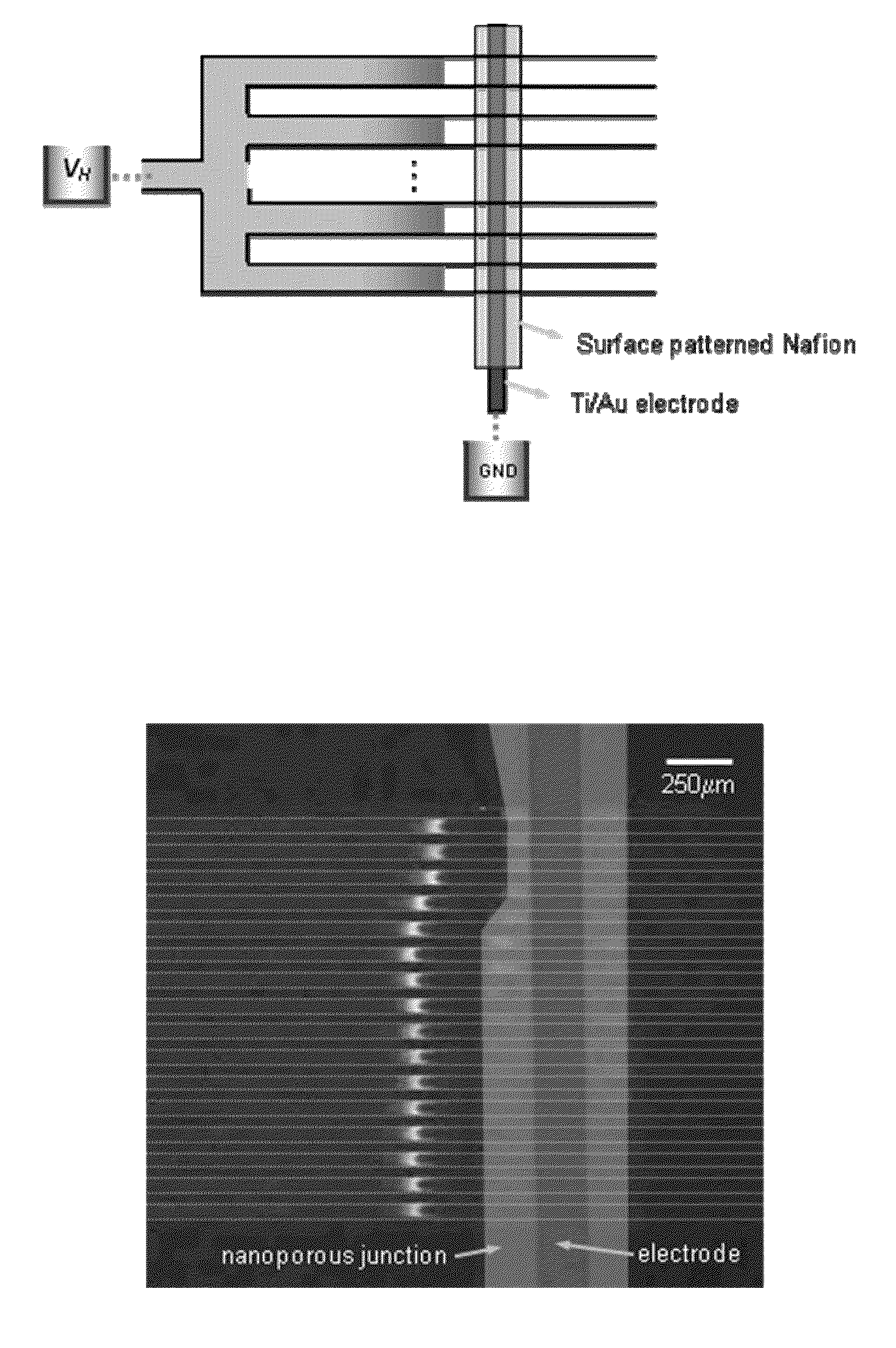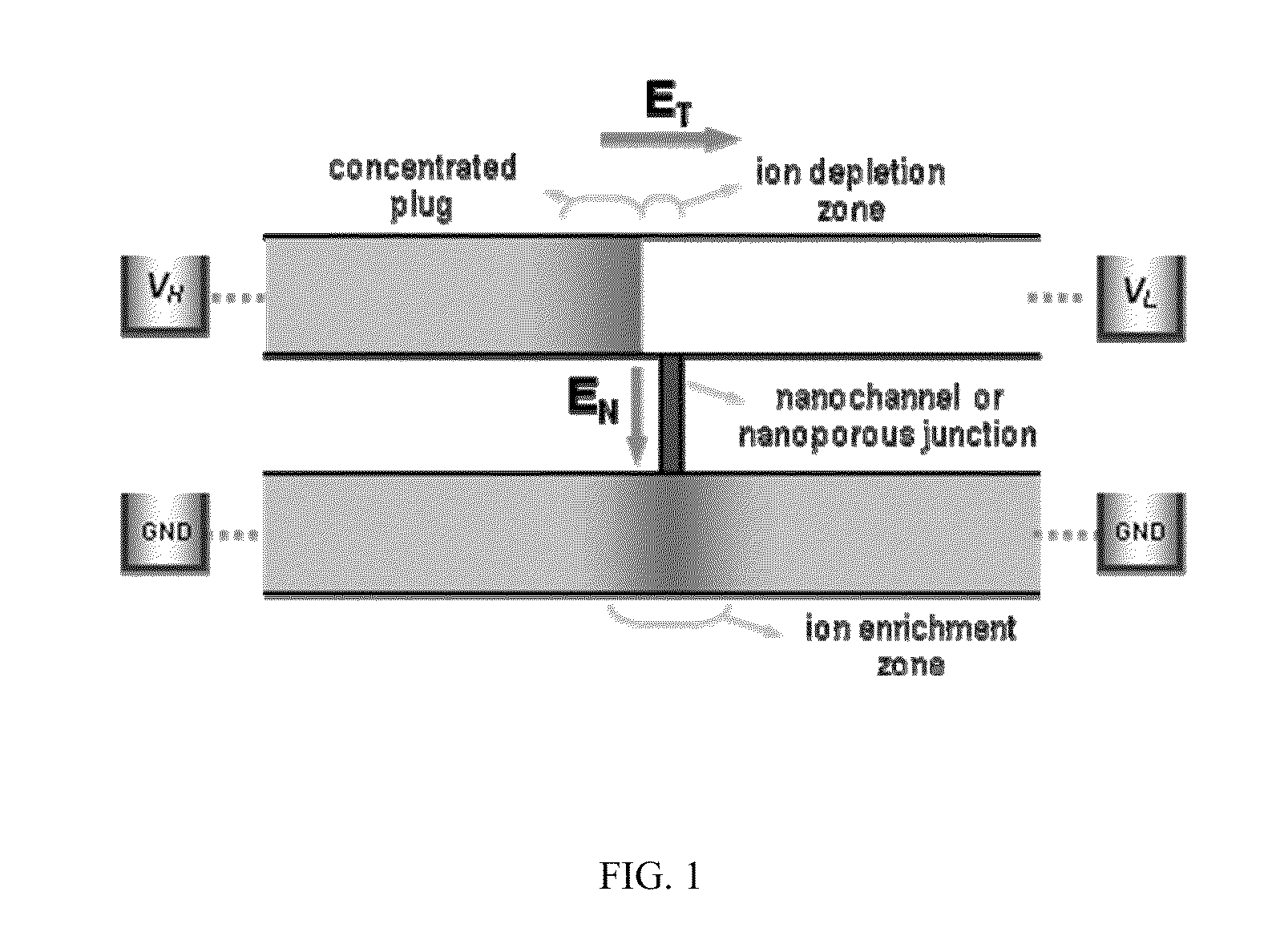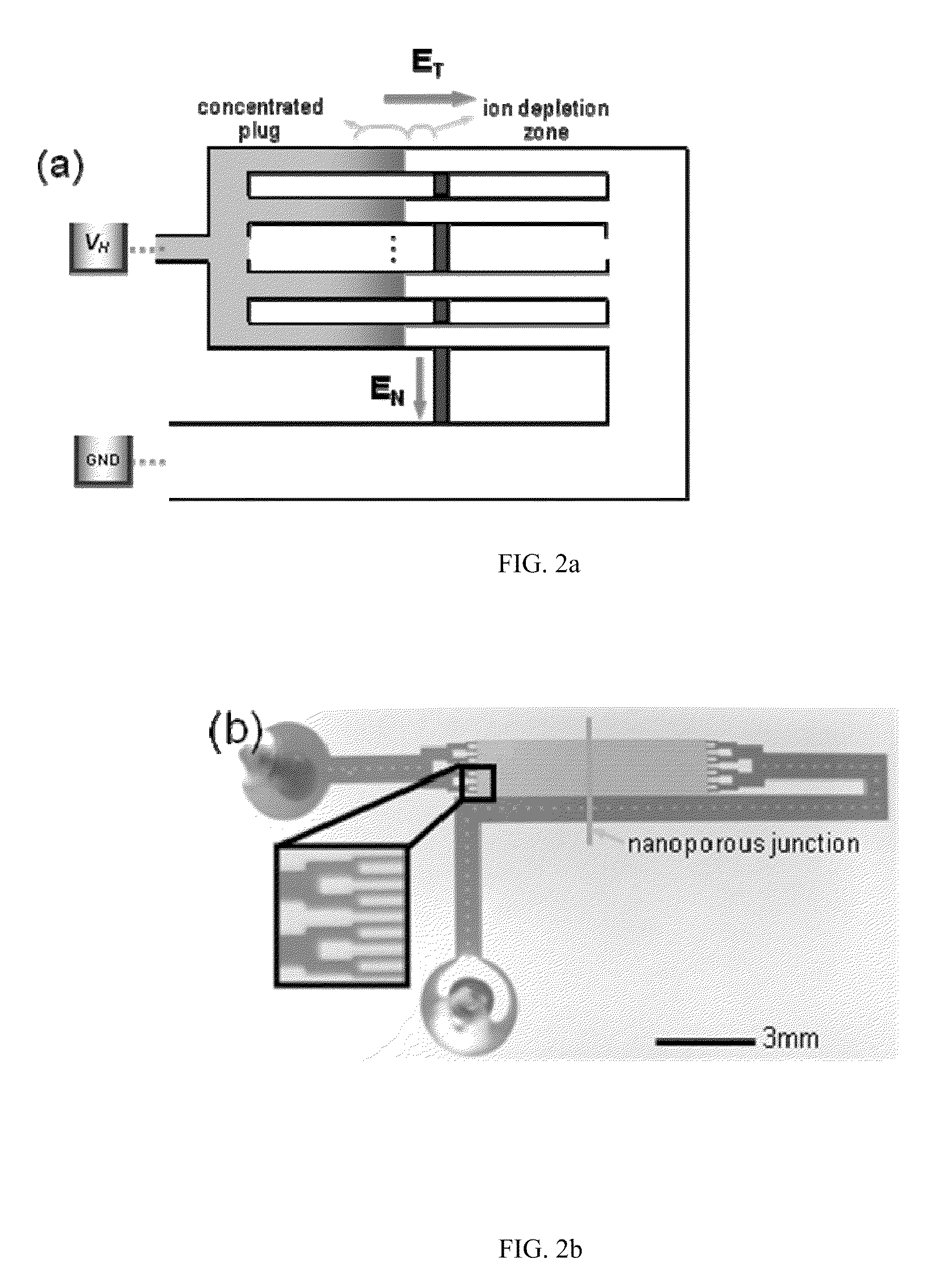Method for Building Massively-Parallel Preconcentration Device for Multiplexed, High-Throughput Applications
a massive parallel, high-throughput technology, applied in the direction of fluid pressure measurement, liquid/fluent solid measurement, peptide measurement, etc., can solve the problems of limited dynamic range, no single analytical method available today that is capable of resolving and detecting, and the power of these new analysis platforms fully utilized, so as to control the speed and efficiency of concentrating samples
- Summary
- Abstract
- Description
- Claims
- Application Information
AI Technical Summary
Benefits of technology
Problems solved by technology
Method used
Image
Examples
examples
[0036]A 16-channel multiplexed polydimethylsiloxane (PDMS) chips with perm-selective nanojunctions was fabricated using surface patterned nanojunction method (Lee, J. H., Y.-A. Song, and J. Han, Multiplexed Proteomic Sample Preconcentration Device Using Surface-Patterned Ion-Selective Membrane Lab on a Chip, 2008. 8: p. 596-601), as shown in FIG. 2(b). In order to match the hydraulic flow resistance, the device has proper splitting / merging scheme with the buffer channel whose size is the same as the total summation of individual sample microchannel. Each sample microchannels has the dimension of 50 μm width×15 μm depth. The concentrating speed correlated with the flow rate through each sample microchannel, and less with EN which can be determined by the vertical distance between each sample channel and buffer channel. Since the flow rate of electrokinetic flow correlates with ET, and less on the cross-sectional area of microchannel, it can be controlled by adjusting total length of ...
PUM
| Property | Measurement | Unit |
|---|---|---|
| Length | aaaaa | aaaaa |
| Length | aaaaa | aaaaa |
| Length | aaaaa | aaaaa |
Abstract
Description
Claims
Application Information
 Login to View More
Login to View More - R&D
- Intellectual Property
- Life Sciences
- Materials
- Tech Scout
- Unparalleled Data Quality
- Higher Quality Content
- 60% Fewer Hallucinations
Browse by: Latest US Patents, China's latest patents, Technical Efficacy Thesaurus, Application Domain, Technology Topic, Popular Technical Reports.
© 2025 PatSnap. All rights reserved.Legal|Privacy policy|Modern Slavery Act Transparency Statement|Sitemap|About US| Contact US: help@patsnap.com



